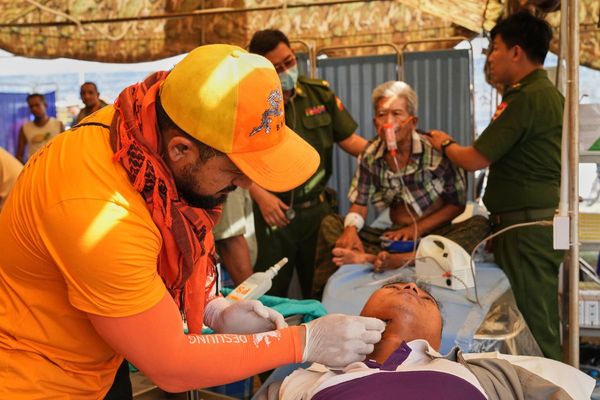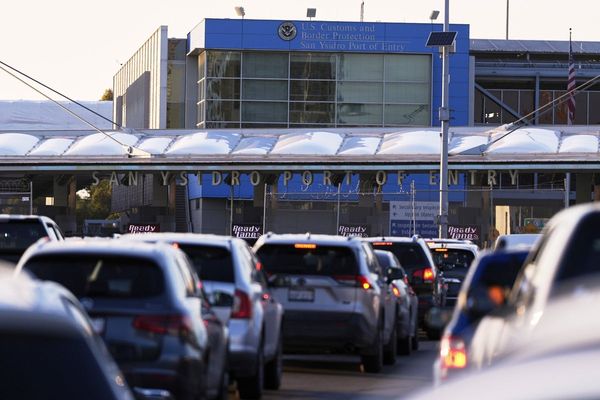
Subway, which has the most locations of any restaurant chain in the U.S., is pursuing a new way to try to boost domestic sales: better bread, not new shops.
Subway’s food operations slipped during the company’s relentless U.S. expansion drive, says John Chidsey, the sandwich chain’s chief executive since November 2019.
The result of those stumbles? Sales hit a peak of $18 billion in 2012—and then fell for years afterward, according to industry consulting firm Technomic Inc. The privately held Subway, which doesn’t release sales numbers, didn’t confirm or dispute the Technomic figures.
Meanwhile, following the expansion push, the chain’s domestic restaurant count has decreased by about 20% in the past five years, and the number of franchisees has shrunk by about 15% during the time period, Subway says. Sandwich-chain rivals have also proliferated.
Mr. Chidsey, the chain’s first CEO to come from outside of its two founding families, says he arrived at a company that acted more like a mom-and-pop organization than one doing billions of dollars in sales. It lacked strong central management and oversight, for one thing.
In response, he slashed corporate staff, renegotiated contracts, and centralized functions such as advertising and culinary standards. As part of that effort, last summer the Milford, Conn.-based chain overhauled its menu, calling it the biggest culinary change in its nearly 57-year history.
The 59-year-old former Burger King CEO is also changing Subway’s longstanding development system to focus more on improving established sites than building new U.S. stores—as well as increasing the brand’s footprint overseas.
The company says that its sales are up globally nearly 20% from 2020. Meanwhile, the domestic store closures and other brand changes have helped boost Subway’s average sales per store in the U.S. last year to the highest level since 2014.
“There were so many things you could go after. You had to prioritize, because if you chased 20 things simultaneously, you’re obviously not going to do them well," Mr. Chidsey says.
The Wall Street Journal talked to Mr. Chidsey recently. Here are edited excerpts.
Vital moves
WSJ: What do you think is the most urgent thing you need to do to turn the brand around?
MR. CHIDSEY: We’ve heard loud and clear from our consumers, we need more craveable food. We need to improve our product quality in certain cases. Part of that is also getting franchisees really re-engaged and improving our operations. We had a long way to go, and we’ve started to make progress.
WSJ: Sales growth started softening about a decade ago. What do you think went wrong?
MR. CHIDSEY: In the U.S., they had a maniacal focus on development. For the longest time, Subway had no competition. There was no Jersey Mike’s, there was no Firehouse Subs. Then, all of a sudden, you have these new guys that have beautiful new restaurants, new equipment and new food. I think those things snuck up on them. Lastly, [co-founder Fred DeLuca] got sick. When he was ill, I think things drifted longer than they should have.
WSJ: You’ve been closing about 1,000 stores in the U.S. a year on average. What number of stores in the U.S. do you think is a healthy amount?
MR. CHIDSEY: We’re probably down 3,000 to 3,500 stores over the last three or four years in the U.S., leaving us with about 20,000 stores and almost 11,000 franchisees total. We have more than 37,500 stores around the world.
I feel like we’ve kind of bottomed. I think in 2022, that will be the first year where the brand will start adding units again because the international growth is so great, even if we were to close a couple hundred more in the U.S.
I care much more about sales overall. If we could have 20% more sales with 10% less restaurants, we’ll make that trade all day long. Some shrinkage is good if you’re ending up with a better portfolio.
WSJ: You’ve invested a lot in convenience during the pandemic like carry out and delivery, but Subway still doesn’t have drive-through, right?
MR. CHIDSEY: We have very few. I would say 7% to 10% of our restaurants in the U.S. have drive-through. On the flip side there, we added that curbside program so takeout grew tremendously. Our third-party delivery, services like DoorDash, went through the roof. We also do direct delivery, so you can go through us as opposed to through a third party. Our digital sales tripled. I think those are avenues that will continue to grow and we need to continue to invest in
WSJ: Who would you say your consumer is?
MR. CHIDSEY: Subway is so ubiquitous. About 92% of Americans live within 5 miles of one. It’s not like Burger King, where we were very focused on the male superfan, the 16-to-32-year-old construction worker. This food is the fresh, healthier-for-you version. We get women, we get kids, we get athletes. It’s really across the board.
WSJ: You think it is still very broad?
MR. CHIDSEY: There’s a little bit of quick-service restaurant about it in the sense of scale. On the flip side, you’ve got fresh products. You’ve got higher-end pricing than fast food but you’re not as high end as a Panera. I like being in the middle.
WSJ: Younger consumers have so many options. Do you think they still want sandwiches?
MR. CHIDSEY: You have the sandwich. You can do that in a wrap, in a bowl if you choose. We’ll give you any option you want.
Challenges ahead
WSJ: What is left to tackle with quality and brand perception?
MR. CHIDSEY: Lots. We have a long way to go in operational excellence. It will take us probably three or four years to catch up on all the remodels that got behind because of supply-chain issues, like trying to get new ovens when they are floating in ships off L.A. When I look at catering, I think Subway should own catering like a Panera. We don’t have to worry about a soggy Big Mac or a Whopper showing up with soggy fries. Our food is ideal for traveling.
WSJ: In terms of the menu, are there other things you see doing there?
MR. CHIDSEY: There’s a lot more we can do around protein improvement, such as adding new meats. Our consumers told us we needed more craveable food, which usually means hot. Customizing a sandwich takes a while, and at some of our competitors, you go in and order by the number. We would also have a suite of signature products, so you don’t have to make any of those selections.
WSJ: A lot of Subways are in city centers that really haven’t come back. Are those some of the ones that have closed, and how is that informing your strategy?
MR. CHIDSEY: That bottom quartile is slowly getting better. Some at colleges have now reopened, but in office parks people haven’t come back. If you’re somebody who had two or three restaurants in downtown Manhattan—I’m going to be honest with you, some of those guys disappeared. They didn’t have a way to dig out. So I would view that as an opportunity for us down the road.
WSJ: Are your franchisees raising menu prices with inflation?
MR. CHIDSEY: I’ve actually been impressed. I was petrified they would use this as an excuse to really go crazy. We’ve worked hard to educate them that this is not the time to be superaggressive on pricing. I would say they’ve increased prices by the inflation rate, and maybe a hair over.
WSJ: You and many other brands are turning to larger franchisees to grow. Subway has really been known as a brand of small entrepreneurs. Can they still enter this brand?
MR. CHIDSEY: We have almost 11,000 franchisees in the U.S.—down 15% in the past five years—so it’s massive, because so many owners have just one or two stores. There will always be an enormous number of onesies and twosies in Subway just given its scale. My vision is, in three to five years, if 20% to 30% of our system was larger operators—from the current 16%—that would be an incredible feat. I think they’ll help lead the way and motivate some of the smaller guys as to what a really well-run restaurant looks like.
WSJ: You’re doing a lot of international deals lately. Where else do you want to grow?
MR. CHIDSEY: China for sure, Japan. We could do a lot in Central and Eastern Europe, including Russia. We’re not very big in Italy or Spain. We definitely want to do something in Turkey. And then parts of Latin America, there’s still plenty of deals to be added there.
WSJ: Staffing is hard everywhere in the industry. How are your franchisees handling it?
MR. CHIDSEY: The amount of labor we need is far less than at a hamburger chain. You can do just fine with five or six people on your crew. We’ve done things like run ad campaigns. We have over a million job applications that we’ve generated for franchisees. We’re still probably down somewhere between 10% to 15% on operating hours at stores because of the employee shortage. I can only imagine how great a year it could have been if just the hours were even.
WSJ: What sandwiches sell the best in the U.S.?
MR. CHIDSEY: Turkey and steak are our top two.
WSJ: How has the pandemic impacted restaurants?
MR. CHIDSEY: It has made change easier for us. We were probably more tradition-bound than a lot of our competitors. Our restaurant of the future is probably going to have to look different.
We’re testing all kinds. There’s a handful of guys and ladies out there that are building nothing but drive-throughs right now. They’re people that are doing a takeout window. We’ll learn a lot in the next 12 to 18 months.







